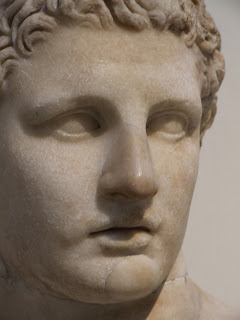I refined my 'template' for testing images in Photoshop and actually discovered I'd misinterpreted smart objects slightly. I couldn't find a way of making photos come into Photoshop at a certain size when you're using them as a smart object (usually they come in way too big). So, if you do want to set up a template, I think you'll need to do something like this:
1. Create a canvas in Photoshop of about 300mm squared.
2. Make sure you have two layers - a locked white background, and an empty layer.
3. Drop a landscape-oriented photo into the empty layer at about 50mm tall.
4. Convert your photo layer into a smart object.
5. Duplicate the smart object and set up a tightly spaced grid.
6. Once you've used the 'align' functions to get it all neat, trim any excess white space off the canvas by re-sizing it.
7. Now click on each smart object layer and apply an adjustment layer of your choice to it. Make sure the adjustment layers are clipped to the layer below (not affecting all layers).
8. You'll then have a sheet full of variations BUT, if you want to replace the content of the smart object (to see another photo with all the variations), you need to resize the photo first (to 50mm tall) and then use it as a replacement - otherwise, it'll come in too big.
The method above will allow you to use portrait-oriented photos without allowing the spacing to become an issue - as long as you make sure all photos you use to test are made 50mm tall to begin with (or whatever measurement you're going with).
I tried two more photos recently and I found the results a little repetitive so I tried something else. If you look at the first spread here, the images are mostly the same but I noticed the top right version was very different. The adjustment used on that layer is 'Black and White: High Contrast Blue Filter'. I wondered whether I could blend it with the one below - the very densely white version, which used 'Channel Mixer: Black and White with Red Filter'. So I opened the original image and made two layers, each containing the image. I then applied the two adjustment layers to each copy of the image. I then applied a blend mode to the upper layer which happened to be 'overlay' and got the great results below.
Tip: to run quickly through blend modes, use 'shift+plus' or 'shift+minus' when the layer is selected.
Another tip: you will sometimes notice that changing the exposure much more than a few clicks left or right will create harsh effects. Instead, try duplicating the image onto another layer, then apply a blend mode to it, like 'darken', and your image will only get deeper and more dynamically lit.
The below are two sets of images, each with a test sheet, original photo and end photo.







this is really excellent.
ReplyDelete